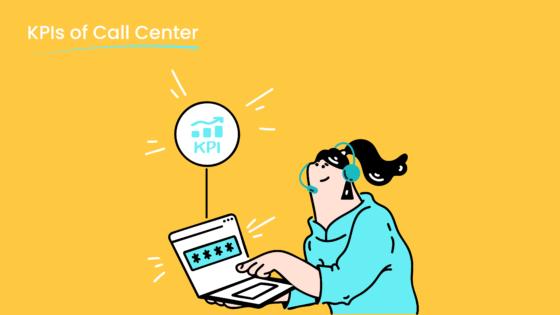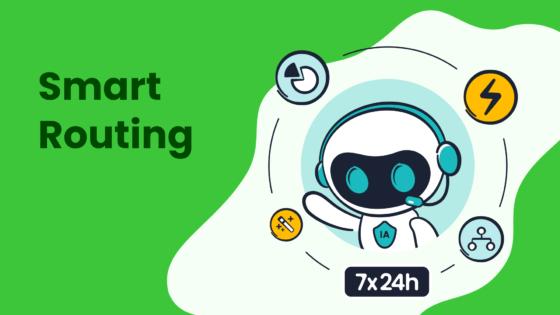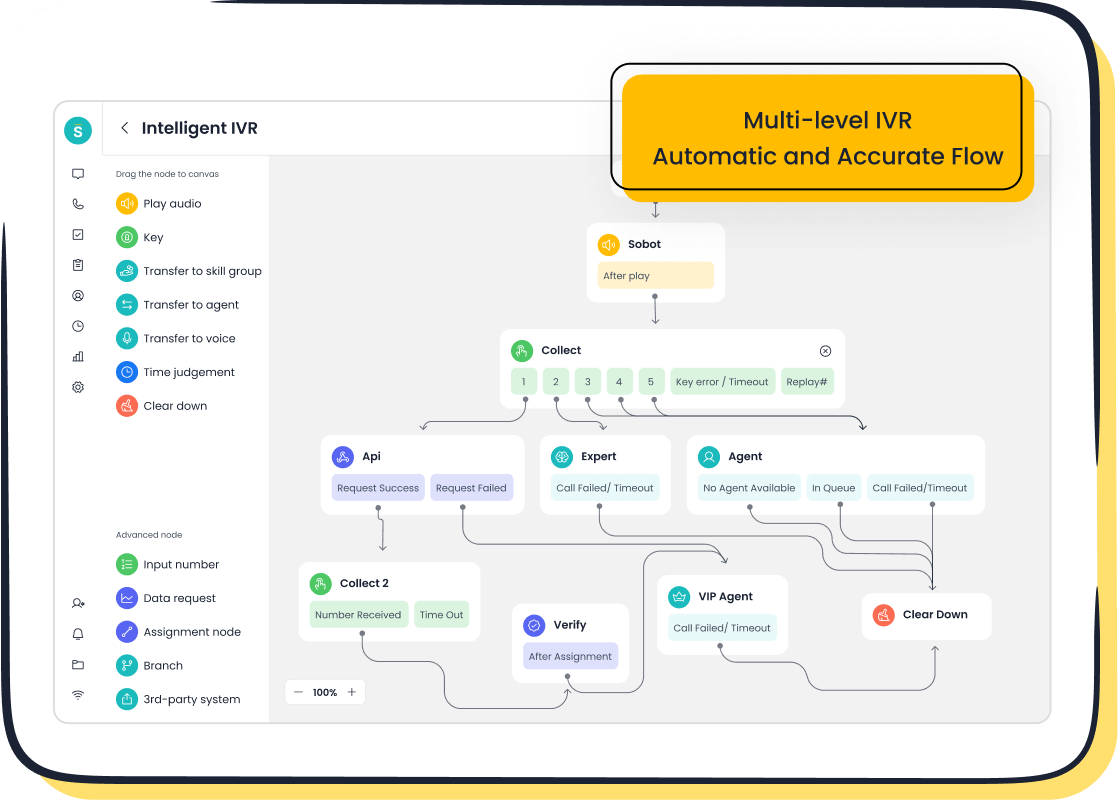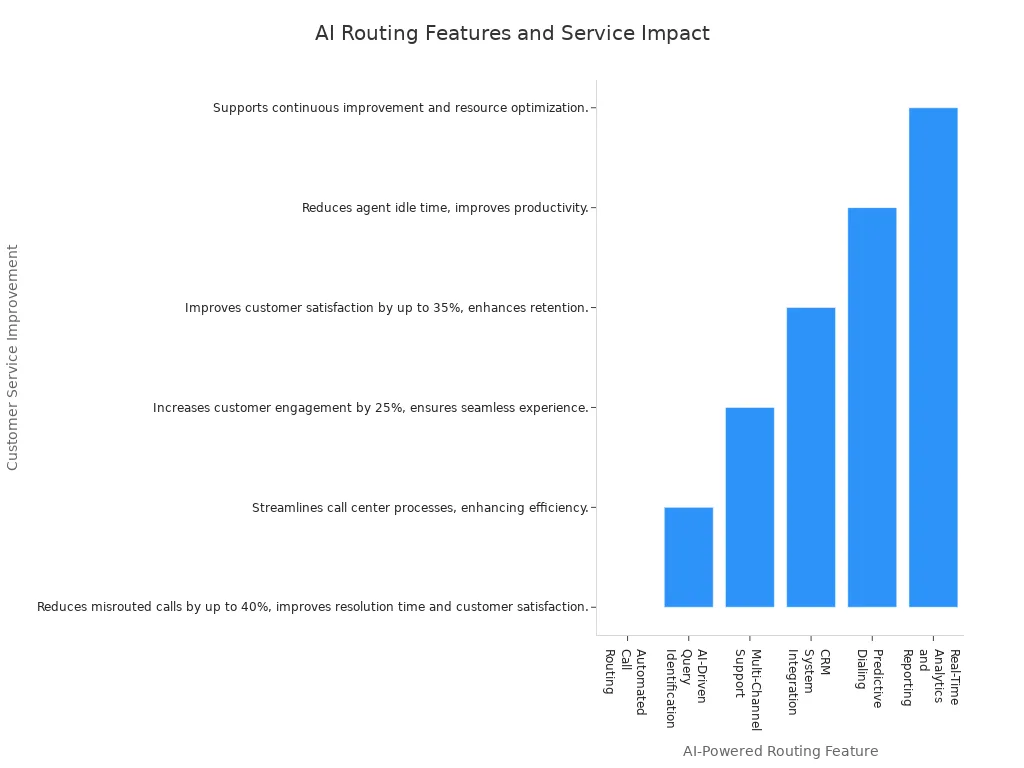How Do SaaS Contact Center Solutions Improve Customer Service

SaaS contact center solutions like Sobot transform customer service by delivering faster response times and improved satisfaction. Many companies now choose SaaS for its cloud-based flexibility and AI-powered features. These platforms help agents resolve 85% of complex issues on the first contact and boost customer satisfaction by up to 30%. Sobot AI and the Sobot call center enhance every customer experience while driving operational efficiency. Businesses gain clear benefits as they move away from traditional systems.
SaaS Contact Center Solutions Overview

What Is SaaS Contact Center Software
SaaS contact center solutions deliver customer service tools through the cloud. Businesses access these platforms using the internet, which means they do not need to install or maintain hardware. SaaS contact center software, such as Sobot, provides a unified workspace for agents to manage calls, chats, emails, and social media messages. This software as a service model allows companies to scale quickly and pay only for what they use. Sobot’s cloud-based platform supports global operations and offers features like intelligent IVR, AI-powered voicebots, and seamless CRM integration. These features help agents deliver consistent and efficient service across all channels.
| Core Component / Functionality | Description |
|---|---|
| Omnichannel Communication Management | Unified interface for voice, email, chat, social media, and self-service, ensuring a consistent experience. |
| Intelligent Routing and Queue Management | Matches customers to the right agent using skills, availability, and business rules. |
| Agent Workspace | Provides customer history, real-time knowledge, and workflow tools for agents. |
| Analytics and Reporting | Offers dashboards, reports, and analytics for continuous improvement. |
| Administration and Management | Includes scheduling, permissions, and integration management tools. |
SaaS contact center solutions stand out from traditional call center software by supporting omnichannel communication and advanced analytics. Sobot’s platform, for example, helps agents resolve issues faster and improves customer satisfaction.
How SaaS Call Center Works
A SaaS call center operates entirely in the cloud. Companies subscribe to the service and access the software through web browsers or mobile apps. Agents can start making and receiving calls within minutes by using virtual phone numbers. The cloud-hosted software handles call routing, IVR, and analytics automatically. Sobot’s SaaS call center supports voice, SMS, email, live chat, and social media, allowing agents to switch channels without losing customer context.
- Quick agent setup with virtual numbers and licenses
- Automated call routing based on skills, language, and location
- Omnichannel support for seamless customer interactions
- CRM integration for personalized service
- Call recording and transcription for quality assurance
- Collaboration tools for team communication
- Advanced analytics for performance monitoring
- Flexible scaling for remote and global teams
SaaS call center software reduces setup time, lowers costs, and enables remote work. Sobot’s cloud-based system ensures high availability and fast deployment for businesses of any size.
Key Standards and Security
Security and reliability are critical for SaaS contact center solutions. Leading providers follow strict industry standards to protect customer data and ensure uptime. Sobot’s cloud-based platform offers a 99.99% SLA, encrypted data transfer, and global network support. The system uses secure protocols to keep information safe both in transit and at rest.
Note: SaaS contact center software must comply with regulations like GDPR and CCPA. Providers implement data encryption, access controls, and regular audits to maintain compliance and build customer trust.
Key certifications and practices include:
- SOC 2 Type 2 and ISO 27001 for security and risk management
- Uptime Institute Tier III or higher for high availability
- Geographic redundancy to minimize outages
- Regular vulnerability testing and disaster recovery plans
Sobot’s cloud-hosted software meets these standards, providing businesses with a secure and reliable contact center solution. The platform’s compliance with global regulations ensures that customer data remains protected at all times.
Benefits for Customer Service
Modern businesses expect more from their customer service teams. SaaS contact center solutions deliver a range of benefits that transform how organizations handle customer interactions. By leveraging advanced features like omnichannel communication, real-time analytics, and AI-powered automation, these platforms help companies deliver better customer support and create memorable customer experiences. Sobot’s omnichannel solution and Voice/Call Center features provide a clear example of how these technologies drive results.
Faster Response Times
Speed matters in customer service. SaaS call center platforms enable agents to respond to customer inquiries much faster than traditional systems. Industry benchmarks show that top-performing SaaS companies respond to customer requests within 5 minutes, while the industry average lags at 42 hours. This dramatic improvement comes from features like real-time routing, automated ticketing, and AI-powered chatbots. These tools instantly direct customers to the right agent or self-service option, reducing wait times and frustration.
Sobot’s Voice/Call Center features, such as intelligent IVR and AI-powered voicebots, ensure that customers reach the right department quickly. Real-time monitoring and analytics allow supervisors to spot bottlenecks and adjust resources on the fly. During peak periods, SaaS call center software can scale up instantly, onboarding new agents and handling higher volumes without delay. This flexibility means customers always receive prompt attention, even during busy times.
Omnichannel communication further accelerates response times. Customers can reach support through their preferred channel—phone, chat, email, or social media—and receive consistent, real-time assistance. AI-driven automation handles simple queries instantly, freeing agents to focus on complex issues. As a result, businesses see faster resolution times and higher customer satisfaction.
Note: SaaS customer support platforms with omnichannel features help companies meet rising expectations for rapid engagement, leading to improved customer experiences and loyalty.
Omnichannel Support
Customers want to connect with businesses on their own terms. Omnichannel support makes this possible by integrating all communication channels—phone, email, chat, social media, and more—into a single platform. SaaS call center solutions like Sobot’s omnichannel solution unify these channels, giving agents a complete view of every customer interaction.
With omnichannel communication, agents can see the entire history of a customer’s journey, no matter which channel they used. This unified approach eliminates the need for customers to repeat themselves and ensures a seamless experience. Real-time data synchronization keeps all information up to date, so agents always have the latest context.
Sobot’s omnichannel solution stands out by offering a unified workspace where agents manage calls, chats, emails, and social media messages in real time. Features like AI-driven chatbots and automated ticketing streamline support, while real-time analytics track key metrics such as Customer Satisfaction Score (CSAT) and Net Promoter Score (NPS). These insights help businesses identify trends and improve service quality.
Omnichannel support also empowers customers to switch channels without losing context. For example, a customer might start a conversation on social media, continue it via email, and resolve it over the phone—all within the same support ticket. This flexibility leads to higher satisfaction and stronger brand loyalty.
Omnichannel communication is essential for delivering a consistent customer experience across all touchpoints. Companies that adopt omnichannel SaaS customer support see measurable improvements in CSAT, NPS, and customer retention.
Agent Productivity
Agent productivity drives the success of any call center. SaaS call center software introduces features that help agents work smarter, not harder. AI-powered chatbots handle routine questions, allowing agents to focus on complex or high-value interactions. Real-time guidance and analytics provide instant feedback, helping agents resolve issues faster and with greater accuracy.
Sobot’s Voice/Call Center features include a unified workspace, real-time monitoring, and automated workflows. These tools reduce manual tasks and streamline after-call work. Agents spend less time on repetitive activities and more time delivering personalized support. Real-time analytics highlight performance trends and identify coaching opportunities, enabling managers to optimize team efficiency.
Research shows that AI applications in SaaS customer support improve agent productivity by automating administrative tasks and providing real-time assistance. For example, workforce analytics can identify non-value-added tasks, leading to a 30% reduction in call wait times during peak hours. ActivTrak’s case study found that agents recovered 30 minutes per day, resulting in significant cost savings and improved agent experience.
- AI-driven chatbots reduce agent workload by handling routine inquiries.
- Real-time analytics and monitoring improve handle times and customer satisfaction.
- Automated workflows and ticketing systems streamline support processes.
- Unified workspaces provide agents with all necessary customer data in real time.
- Coaching and performance tracking tools help managers boost team productivity.
SaaS customer support platforms empower agents to deliver better customer support, reduce burnout, and achieve higher job satisfaction.
Scalability and Flexibility
Business needs change quickly. SaaS call center solutions offer unmatched scalability and flexibility, allowing organizations to adapt without major investments or disruptions. Built on cloud infrastructure, these platforms let companies scale up or down as demand shifts. Sobot’s Voice/Call Center features support global operations, with access to phone numbers worldwide and real-time deployment.
SaaS customer support platforms minimize the need for in-house IT resources. Providers handle maintenance, updates, and security, so businesses can focus on delivering great customer experiences. Real-time updates ensure that users always have access to the latest features and improvements.
- SaaS call center software supports remote work and collaboration from any device with internet access.
- Subscription pricing models allow businesses to add or remove users and features as needed.
- Integration capabilities via APIs enable seamless connection with other business systems.
- Automatic updates and maintenance reduce downtime and IT overhead.
- Rapid deployment means companies can launch new support channels or onboard agents in real time.
Opay’s experience with Sobot’s omnichannel solution highlights these benefits. After implementing Sobot, Opay increased its customer satisfaction rate from 60% to 90%, reduced operational costs by 20%, and improved conversion rates by 17%. The ability to scale support operations and integrate multiple channels into a single platform played a key role in these results.
SaaS contact center solutions provide the scalability and flexibility needed to support business growth and changing customer demands. Companies can respond to market shifts, seasonal spikes, or global expansion with ease.
Summary of Key Benefits
| Benefit | Description | Sobot Feature Example |
|---|---|---|
| Faster Response Times | Real-time routing, AI automation, and omnichannel communication speed up customer support. | Intelligent IVR, AI-powered voicebot |
| Omnichannel Support | Unified platform for all channels, seamless customer experience, and real-time data sharing. | Omnichannel solution, unified inbox |
| Agent Productivity | AI tools, real-time analytics, and automated workflows boost agent efficiency and morale. | Unified workspace, real-time reports |
| Scalability & Flexibility | Cloud-based, easy to scale, supports remote work, and integrates with other systems. | Global network, API integration |
SaaS call center software delivers a powerful combination of features that drive better customer support, improved agent experience, and superior customer experiences. Companies like Opay demonstrate the real-world impact of adopting these solutions, achieving higher satisfaction, lower costs, and greater operational efficiency.
Key Features of SaaS Contact Center Software

Modern customer service relies on a robust set of key features that empower agents, streamline workflows, and deliver exceptional experiences. SaaS call center platforms like Sobot offer a comprehensive suite of features designed to meet the evolving needs of businesses and their customers. These key features drive performance, efficiency, and satisfaction across every interaction.

AI-Powered Routing
AI-powered routing stands as one of the most impactful key features in SaaS call center solutions. This technology uses artificial intelligence to analyze incoming queries and direct them to the most suitable agent or department. Sobot’s Voice/Call Center leverages intelligent IVR and AI-driven voicebots to automate call distribution, ensuring customers reach the right resource quickly.
| AI-Powered Routing Feature | Description | Customer Service Improvement |
|---|---|---|
| Automated Call Routing | Directs queries to the correct department or agent, reducing wait times and misrouted calls. | Reduces misrouted calls by up to 40%, improves resolution time and customer satisfaction. |
| AI-Driven Query Identification | Quickly identifies query types and routes calls intelligently. | Streamlines call center processes, enhancing efficiency. |
| Multi-Channel Support | Handles interactions across voice, chat, email, and social media. | Increases customer engagement by 25%, ensures seamless experience. |
| CRM System Integration | Provides real-time access to customer data for personalized support. | Improves customer satisfaction by up to 35%, enhances retention. |
| Predictive Dialing | Predicts agent availability and dials accordingly. | Reduces agent idle time, improves productivity. |
| Real-Time Analytics and Reporting | Offers actionable insights to optimize workflows and service delivery. | Supports continuous improvement and resource optimization. |

AI-powered routing features in SaaS call center platforms automate and optimize customer support by intelligently routing tickets, performing live sentiment analysis, and providing automated chatbot responses. These systems handle large volumes of inquiries efficiently and offer 24/7 availability. Customers experience reduced wait times as the system quickly retrieves and processes information. AI analyzes customer data to anticipate needs and personalize interactions, which improves satisfaction and reduces operational costs by automating routine tasks.
Predictive dialing further enhances agent productivity by automatically dialing numbers when agents are available, minimizing idle time. Multi-channel support allows contact centers to engage customers via voice, SMS, email, and social media from a single platform, ensuring a seamless omnichannel experience. These key features collectively reduce wait times, improve call routing accuracy, and ensure customers connect with the right agents, leading to more positive interactions and higher satisfaction rates.
Tip: Sobot’s AI-powered routing features enable businesses to resolve customer issues faster and more accurately, driving higher first call resolution rates and improved customer satisfaction. Learn more about Sobot’s Voice/Call Center capabilities here.
CRM Integration
CRM integration is a cornerstone among key features in SaaS call center software. This feature connects the contact center platform with customer relationship management systems, centralizing business communications and analytics. Sobot’s omnichannel solution offers seamless integration with popular CRM tools, giving agents instant access to customer profiles, purchase history, and past support tickets.
- Agents gain easy access to customer information, enabling more personalized and seamless interactions.
- Automation reduces time spent on administrative tasks, allowing agents to focus on complex issues.
- Integrations improve internal collaboration and enable quick escalation and support among agents.
- CRM integration provides insights into customer actions and decision drivers, improving customer journey management and satisfaction.
CRM integration supports meaningful personalization, such as routing high-value clients to senior agents or greeting returning customers with their case details ready. Centralizing customer information empowers agents to avoid rigid scripts and respond with genuine empathy, building rapport and trust. Omnichannel workflows enabled by CRM integration ensure smooth handoffs across channels, preventing customers from repeating issues and reducing frustration.
Sobot’s unified workspace consolidates all customer data, allowing agents to deliver empathetic and efficient service. Automated workflows streamline repetitive tasks like follow-ups and escalations, boosting agent productivity and collaboration. AI-powered chatbots embedded in CRM automate personalized service across channels, ensuring customers receive support on their preferred platforms.
Note: CRM integration is essential for delivering personalized, efficient, and consistent customer experiences. Sobot’s omnichannel solution supports integration with leading CRM systems, enhancing agent performance and customer satisfaction. Explore Sobot’s omnichannel features here.
Analytics and Reporting
Analytics and reporting are key features that drive informed decision-making and continuous improvement in SaaS call center environments. Sobot’s Voice/Call Center and omnichannel solutions provide real-time monitoring, self-service reporting, and advanced analytics to help businesses track performance and optimize operations.
- SaaS analytics tools combine qualitative and quantitative data to provide deeper insights into user behavior.
- Dashboards visualize KPIs such as conversion rates, customer churn, and agent performance.
- Automated reporting platforms aggregate data from multiple sources, enabling customizable dashboards, scheduled report delivery, and alert notifications.
- Revenue analytics tools track real-time revenue, user growth, and SaaS-specific metrics.
- AI enhances analytics by uncovering hidden insights, predicting trends, and making data accessible to non-technical users.
Key metrics tracked by analytics and reporting features include:
| KPI | Description |
|---|---|
| Average Handling Time (AHT) | Measures the average time an agent spends handling a customer interaction. |
| First Call Resolution (FCR) | Percentage of customer issues resolved during the first contact. |
| Customer Satisfaction (CSAT) | Gauges customer satisfaction after interactions, typically via surveys. |
| Service Level | Percentage of calls answered within a target timeframe. |
| Abandonment Rate | Percentage of customers who hang up before reaching an agent. |
| Occupancy Rate | Percentage of time agents spend handling interactions versus available time. |
| Agent Utilization | Percentage of time agents spend on active interactions versus idle time. |
| Customer Effort Score (CES) | Measures how much effort customers expend to resolve issues. |
| Net Promoter Score (NPS) | Likelihood of customers recommending the company. |
| Customer Retention Rate | Percentage of customers continuing business over time. |
| Average Speed of Answer (ASA) | Average time it takes for calls to be answered. |
| SLA Compliance | Tracks adherence to agreed service quality and response times. |
| Contact Quality (QA) Score | Assesses agent performance through call monitoring and evaluations. |
| Employee Satisfaction (ESAT) | Measures agent satisfaction levels. |
Real-time analytics and reporting features allow businesses to respond quickly to trends and operational issues. Data visualization tools help stakeholders interpret data through charts, graphs, and live dashboards, facilitating informed decision-making. AI and machine learning uncover hidden insights, predict trends, and make data accessible to non-technical users. Tracking churn rate helps identify customer retention issues and opportunities for improvement. Understanding customer lifetime value supports prioritizing retention efforts, upselling, and optimizing pricing. Monitoring conversion rates aids in optimizing marketing and sales funnels.
Automated reporting and alert systems ensure timely awareness of performance changes. These analytics capabilities empower organizations to improve customer satisfaction, operational efficiency, reduce churn, identify upselling opportunities, and drive revenue growth.
Tip: Sobot’s analytics and reporting features provide actionable insights that help businesses optimize customer service operations and achieve measurable results. Discover more about Sobot’s reporting capabilities here.
Self-Service Options
Self-service options have become essential key features in SaaS call center platforms. These features empower customers to resolve basic queries independently, reducing call volume and peak-hour traffic. Sobot’s omnichannel solution includes AI-powered chatbots, interactive voice response (IVR), and online FAQs, enabling customers to find answers quickly without waiting for an agent.
Implementing self-service options such as chatbots, IVRs, and online FAQs encourages customers to resolve basic queries independently, reducing call volume and peak-hour traffic. This frees agents to focus on complex issues, improving overall efficiency. Metrics like Average Handle Time (AHT) and Average Hold Time (AHT) improve when self-service is effectively used, contributing to better customer satisfaction by reducing wait times and enabling faster resolutions.
Industry insights and case studies show that self-service technologies like web portals, IVR, and AI-powered chatbots reduce the volume of assisted interactions, leading to significant cost savings (e.g., $0.24 per self-service interaction versus $5.50 per assisted call). For straightforward queries, self-service portals reduced call volumes by 29%, demonstrating workload reduction. However, poorly designed self-service content can increase calls by 66% due to customer frustration, underscoring the importance of clear, interactive, and well-structured self-service options to improve customer satisfaction.
A large-scale empirical study analyzing nearly 10 million calls to a U.S. insurance company's contact centers demonstrates that effective self-service platforms, such as interactive voice-response (IVR) systems, can significantly reduce the number of calls transferred to live agents. This reduction lowers operational costs and decreases customer wait times. The study also highlights that customizing self-service platforms based on customer attributes, including location and caller intent, improves personalization and customer experience. Predictive modeling of call transfer likelihood enables better workforce planning and proactive routing, which mitigates customer frustration and enhances service quality.
Sobot’s customizable self-service options allow businesses to tailor FAQs, IVR menus, and chatbot responses to meet specific customer needs. The platform’s AI-powered chatbots provide 24/7 support, handling routine inquiries and freeing agents to address more complex issues. Real-time monitoring of self-service interactions helps businesses identify gaps and continuously improve content and workflows.
Note: Effective self-service options reduce contact center workload, lower operational costs, and improve customer satisfaction. Sobot’s omnichannel solution offers customizable self-service features that enhance the customer experience and drive efficiency. Learn more about Sobot’s self-service capabilities here.
Why Key Features Matter
The key features of SaaS call center software—AI-powered routing, CRM integration, analytics and reporting, and self-service options—work together to create a high-performance, customizable, and scalable customer service environment. Sobot’s Voice/Call Center and omnichannel solutions exemplify how these features deliver real-time support, seamless integration, and superior customer experiences.
Businesses benefit from:
- Faster response times and improved first call resolution rates
- Personalized and empathetic customer interactions
- Data-driven decision-making and continuous performance improvement
- Reduced operational costs and increased agent productivity
- Customizable workflows and self-service options tailored to customer needs
SaaS call center platforms like Sobot provide the key features necessary for modern customer service success. Companies that leverage these features achieve higher customer satisfaction, better retention, and stronger business outcomes.
For more information about Sobot’s key features and how they can transform your customer service operations, visit Sobot’s official website.
SaaS vs. Traditional Contact Centers
Cost Efficiency
Organizations often choose cloud contact center solutions for their cost efficiency. SaaS platforms eliminate the need for large upfront investments in hardware and infrastructure. Companies pay predictable subscription fees, which simplifies budgeting and financial planning. Traditional contact centers require significant capital expenditure and ongoing maintenance costs. Businesses using SaaS models avoid hardware limits and maintenance schedules, enabling flexible scaling as their customer base grows.
| Cost Aspect | Traditional On-Premise Contact Centers | SaaS (Cloud-Based) Contact Centers |
|---|---|---|
| Upfront Costs | High (hardware, infrastructure) | Minimal (subscription-based) |
| Recurring Costs | Lower (maintenance, support) | Higher (subscription fees) |
| Scalability | Limited by physical infrastructure | High, flexible scaling |
| IT Involvement | Significant (maintenance, upgrades) | Reduced (provider-managed) |
| Pricing Model | Capital expenditure | Operational expenditure |
Companies report measurable savings after switching to cloud contact centers. For example, consolidating regional centers into a single cloud solution can reduce licensing and hardware costs by over 40% in the first year. Subscription pricing also improves budget predictability and streamlines vendor management.
Deployment and Updates
SaaS contact centers deploy much faster than traditional systems. Businesses can go from signup to full operation within hours or days. Traditional deployments often take weeks or months due to procurement and setup. SaaS providers handle all updates, patches, and bug fixes automatically, usually without downtime. This process ensures that every customer benefits from the latest features and security improvements. Traditional systems require manual upgrades, which can disrupt operations and increase costs.
- SaaS solutions deploy 50-70% faster than on-premises systems.
- Updates are frequent, seamless, and managed by the provider.
- No need for local installation or complex infrastructure management.
Reliability and Uptime
Reliability is critical for delivering a positive customer experience. SaaS contact centers typically offer 99.99% uptime SLAs, supported by automated failover, multi-region redundancy, and continuous monitoring. Providers implement robust disaster recovery plans and security measures to minimize downtime. Traditional contact centers may have lower uptime guarantees due to manual maintenance and reliance on on-premises infrastructure. Sobot’s global network and system stability ensure that customers receive uninterrupted service, even during peak periods.
| Aspect | SaaS Contact Center Solutions | Traditional Contact Center Systems |
|---|---|---|
| Uptime and Reliability | 99.99% or higher SLAs, automated failover, multi-region redundancy | Lower guarantees, manual maintenance, less seamless failover |
| Maintenance and Updates | Provider-managed, automatic updates | User-managed, manual updates |
| Control and Customization | Limited infrastructure control, provider-managed resilience | Greater control, increased complexity |
| Dependency on Connectivity | Requires reliable internet | Less dependent, but limited redundancy |
Customer Experience
Switching to SaaS contact centers leads to significant improvements in customer experience. AI and analytics enable faster issue resolution and more personalized interactions. Customers benefit from reduced wait times, proactive engagement, and seamless omnichannel support. Metrics such as average resolution time, customer satisfaction scores, and retention rates improve after migration to cloud platforms. SaaS solutions foster continuous feedback and adaptability, helping support teams deliver meaningful, timely customer service. Sobot’s advanced analytics and AI tools allow businesses to focus on building trust and long-term relationships with every customer.
Tip: SaaS contact centers transform customer experience by enabling faster, more personalized support and driving higher satisfaction scores.
Choosing the Right SaaS Contact Center Solution
Evaluation Criteria
Selecting the best saas call center solution requires a clear understanding of what to look for in a saas call center. Businesses should focus on the following criteria:
- Pricing transparency—know what features each tier includes to avoid hidden costs.
- Data security—ensure the provider uses strong security layers and complies with regulations.
- Privacy policies—verify how vendors use and store customer data.
- Backup and recovery—look for service level agreements with uptime guarantees.
- Ease of setup—choose solutions with strong vendor support for onboarding.
- User learning curve—prioritize platforms with clear onboarding and training.
- Customer support—seek providers offering multiple support channels and responsive service.
- Integration capabilities—ensure seamless connection with CRM and other business tools.
- Data portability—confirm the ability to export data easily.
Sobot stands out by offering robust integration, transparent pricing, and ongoing support. Its customizable features and global network help businesses scale with confidence.
Implementation Steps
A successful saas customer support rollout follows these steps:
- Assign a dedicated project lead to coordinate the process.
- Define SMART goals to guide implementation.
- Focus first on core features before expanding.
- Use a phased rollout plan with detailed training for each team.
- Develop user training resources, including knowledge bases and demos.
- Collect feedback regularly to refine the process.
- Track key metrics like user satisfaction and productivity.
Sobot’s support team assists with onboarding, training, and integration, ensuring a smooth transition.
Optimization Best Practices
To maximize saas customer support performance, companies should:
- Set and monitor clear KPIs such as Average Handle Time and Customer Satisfaction.
- Provide continuous agent training using AI-powered microlearning.
- Use gamification to boost engagement.
- Leverage automation and self-service features to free agent time.
- Regularly update quality assurance processes.
- Maintain a positive, people-focused work environment.
- Offer multiple communication channels and build a strong internal knowledge base.
Sobot’s customizable platform and ongoing optimization services help businesses adapt quickly and deliver superior support.
SaaS contact center solutions, such as Sobot, help businesses deliver faster, more reliable customer service. Real-world examples show that companies like Société Générale and Medical City Clinic improved satisfaction and reduced costs by using these platforms. Key features—like AI-powered chatbots, omnichannel support, and analytics—make customer interactions smoother and more efficient. Companies looking to future-proof their operations should explore Sobot’s solutions for a smarter approach to customer engagement.
FAQ
What is a SaaS contact center solution?
A SaaS contact center solution is cloud-based software that helps businesses manage customer service across channels. Companies use it to handle calls, chats, emails, and social media without installing hardware. SaaS contact center solutions offer flexibility, scalability, and fast deployment.
How does a SaaS contact center improve customer service?
SaaS contact center solutions improve customer service by providing faster response times, omnichannel support, and AI-powered automation. These platforms help agents resolve issues quickly and deliver consistent experiences. Companies see higher customer satisfaction and lower operational costs.
Is data secure in a SaaS contact center solution?
Yes. Leading SaaS contact center solutions use encrypted data transfer, strict access controls, and regular security audits. Providers like Sobot maintain 99.99% uptime and comply with global standards, ensuring customer data stays safe and protected.
Can SaaS contact center solutions integrate with CRM systems?
SaaS contact center solutions integrate easily with popular CRM systems. This integration gives agents instant access to customer information, enabling personalized service. Businesses benefit from seamless workflows and improved customer interactions.
What industries benefit most from SaaS contact center solutions?
Many industries benefit from SaaS contact center solutions, including retail, finance, gaming, education, and enterprise services. Companies use these platforms to unify customer support, sales, and marketing, driving better results and higher satisfaction.
See Also
Best Contact Center Platforms Evaluated For The Year 2024
Leading Cloud-Based Contact Center Services Rated In 2024
A Ten-Step Guide To Deploy Omnichannel Contact Centers
